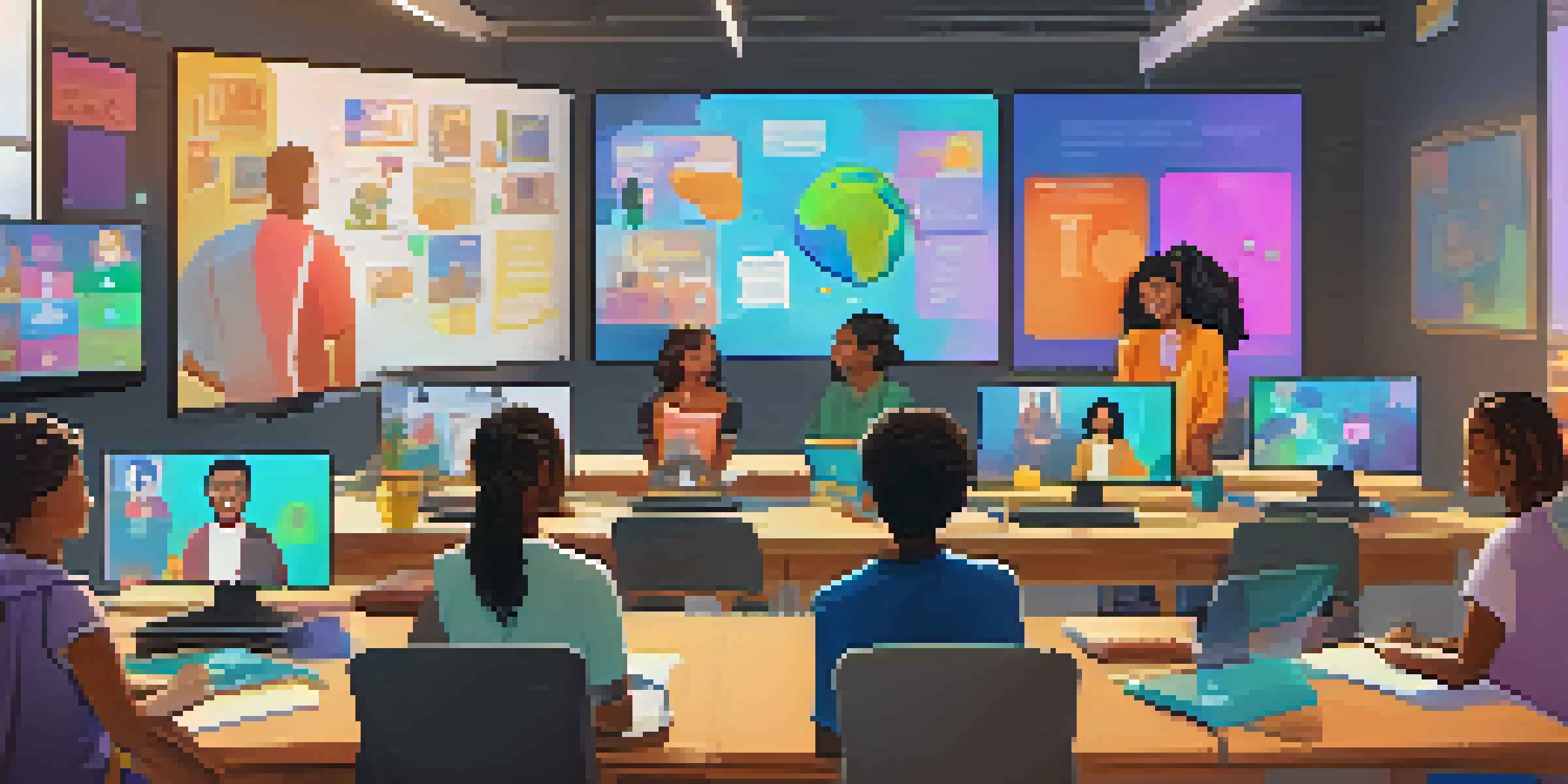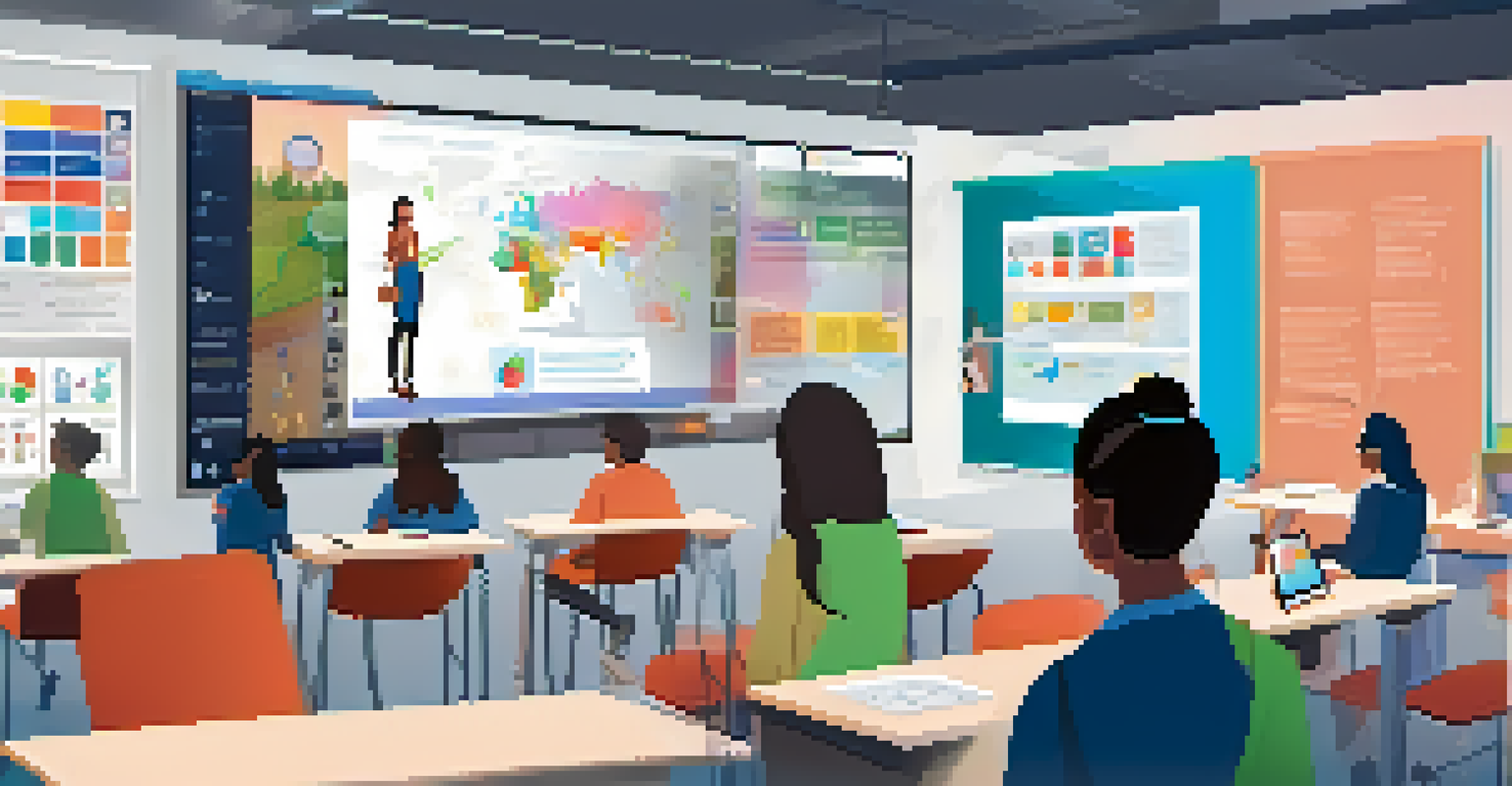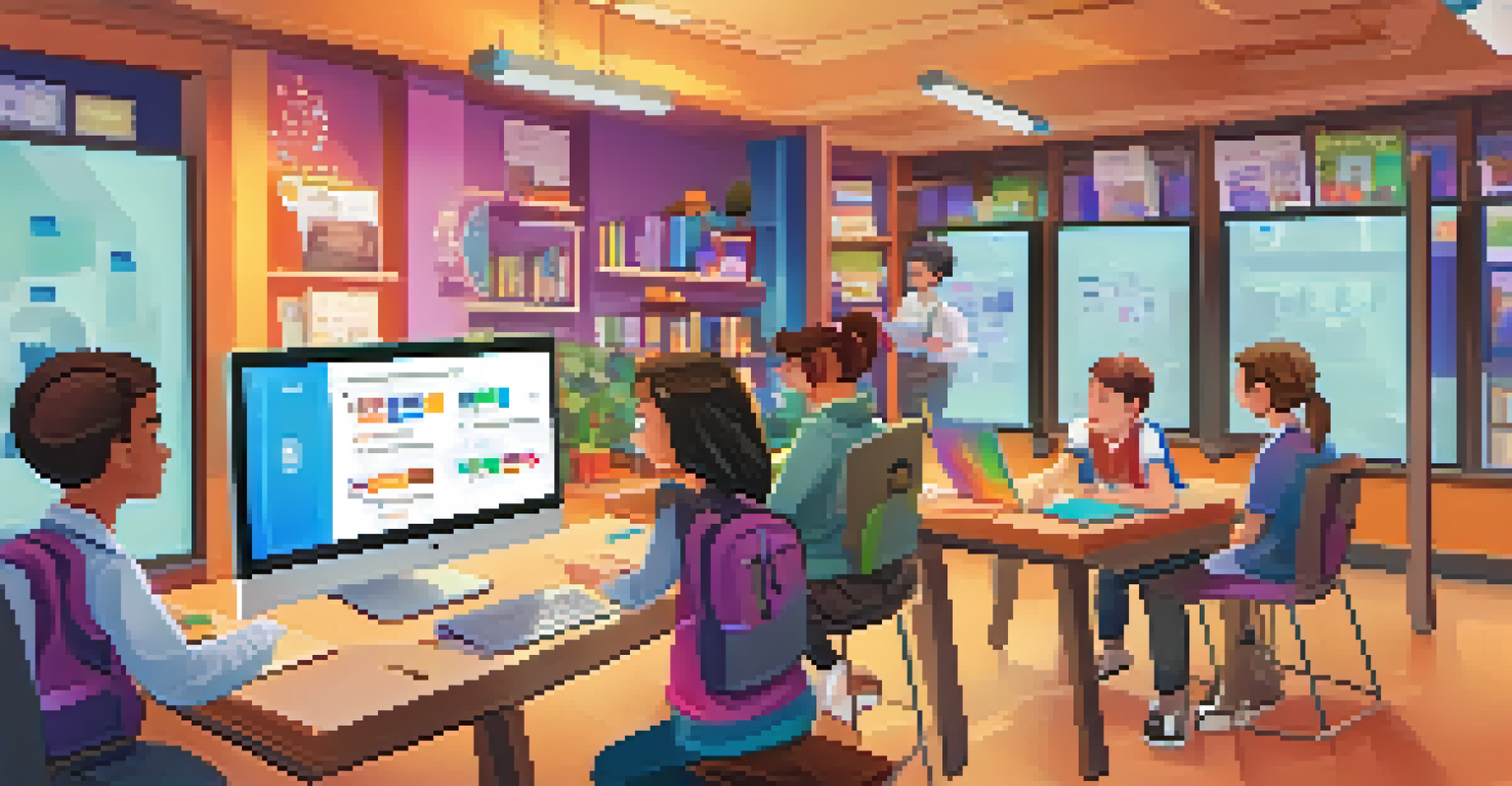Designing Virtual Classrooms for Maximum Engagement

Understanding the Importance of Engagement in Virtual Learning
Engagement in virtual classrooms is crucial for effective learning. When students are engaged, they are more likely to absorb information and participate actively. Without engagement, learners can easily feel isolated and unmotivated, diminishing the overall educational experience.
Engagement is the key to successful learning in any environment, especially in virtual classrooms where connection can be a challenge.
Consider a traditional classroom setting: students interact with their peers and instructors, creating a dynamic learning environment. In virtual settings, this interaction can be harder to achieve, making it essential to incorporate strategies that foster engagement. This includes using multimedia tools and interactive elements to keep the online atmosphere lively and stimulating.
Ultimately, the goal is to create an environment where students feel connected, both to the material and each other. By prioritizing engagement, educators can enhance retention and understanding, paving the way for a more successful learning journey.
Choosing the Right Technology for Interactive Learning
Selecting the right technology is foundational to designing engaging virtual classrooms. Video conferencing tools, learning management systems, and collaboration platforms all play a role in how students interact with course content. It's important to choose tools that are user-friendly and accessible to all learners.

For instance, platforms like Zoom or Microsoft Teams allow for real-time interaction, while tools like Kahoot can introduce gamification elements, making learning fun. Integrating various technologies can cater to different learning styles, ensuring that visual, auditory, and kinesthetic learners all find their niche.
Engagement Boosts Learning Success
Active engagement in virtual classrooms enhances information retention and fosters a sense of community among students.
However, it's not just about the tools themselves; it's also about how they're used. Educators should be trained to utilize these technologies effectively, creating a seamless experience that maximizes student engagement and participation throughout the course.
Creating a Welcoming and Inclusive Virtual Environment
A welcoming virtual classroom encourages participation and helps students feel valued. Setting the tone starts with the first interaction: the virtual classroom should be welcoming, vibrant, and inclusive. This can be achieved by using friendly visuals, clear communication, and establishing a positive online culture.
The best way to predict the future of education is to create it through interactive experiences and collaborative learning.
Incorporating diverse materials and perspectives can also foster inclusivity, ensuring that all students see themselves represented in the curriculum. Encouraging students to share their backgrounds and experiences can create a richer discussion and a more connected community.
Additionally, instructors should actively promote respectful dialogue and celebrate differences. By creating an inclusive environment, students are more likely to engage and contribute, leading to a more enriching learning experience for everyone involved.
Incorporating Interactive Activities to Boost Engagement
Interactive activities are a fantastic way to keep students engaged in a virtual setting. These can range from polls and quizzes to breakout rooms for group discussions. The key is to create opportunities for students to actively participate rather than passively consume information.
For example, a simple poll can gauge student understanding of a topic, while breakout rooms allow for deeper discussions in smaller groups. These activities not only break the monotony of lectures but also encourage collaboration and peer learning, which are vital for engagement.
Technology Enhances Interaction
Choosing user-friendly technology and training educators on its effective use is essential for facilitating interaction and participation.
When students feel they are part of a community, they are more likely to participate. Therefore, incorporating a variety of interactive activities can significantly enhance both engagement and retention in virtual classrooms.
Utilizing Multimedia for Enhanced Learning Experiences
Multimedia elements like videos, infographics, and podcasts can transform a standard lecture into an engaging learning experience. Integrating different formats caters to various learning styles and keeps the content fresh and interesting. For example, a short video can illustrate complex concepts more effectively than a lengthy text.
Moreover, multimedia can help break up the session, allowing for moments of reflection and discussion. When students engage with different mediums, they are more likely to retain information and feel excited about learning.
However, it's important to use multimedia purposefully. Each element should serve a clear educational goal, ensuring that it enhances rather than distracts from the overall learning experience.
Encouraging Student Feedback for Continuous Improvement
Feedback is a powerful tool for enhancing engagement in virtual classrooms. By regularly soliciting input from students, educators can understand what works and what doesn’t. This not only shows students that their opinions matter but also helps tailor the learning experience to better meet their needs.
Consider implementing surveys or discussion sessions where students can share their thoughts on the course structure, content, and technology used. This feedback loop allows educators to make informed adjustments, fostering a more engaging environment over time.
Feedback Drives Continuous Improvement
Regularly soliciting student feedback helps educators refine their teaching methods, creating a more engaging and responsive learning environment.
Additionally, showcasing changes made based on student feedback reinforces the sense of community and collaboration. When students see their input lead to tangible improvements, they are more likely to engage actively in future discussions and activities.
Implementing Gamification to Increase Motivation
Gamification is an innovative way to enhance engagement by infusing game-like elements into the learning process. This could include point systems, badges, or leaderboards that motivate students to participate and excel. By turning learning into a game, educators can tap into students' natural competitive spirit.
For instance, creating challenges or quests related to course content can make lessons more dynamic and interactive. Students often find themselves more invested when they feel they are working toward achievements and rewards.

However, it's crucial to balance fun with educational value. Gamification should complement the learning objectives, ensuring that while students are motivated, they are also gaining the knowledge and skills necessary for their academic success.